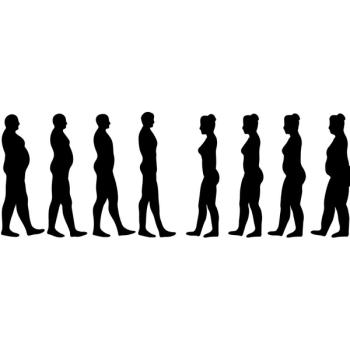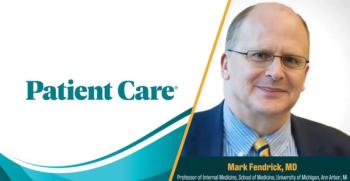
First-Ever Guideline Establishes Lifestyle Intervention as Central Strategy in Treating, Reversing Type 2 Diabetes and Prediabetes
Novel guidelines include specific strategies that support the prescription, implementation, and monitoring of lifestyle changes to reach glycemic control and, possibly, disease remission.
The American College of Lifestyle Medicine (ACLM) has published the first clinical practice guideline to formally prioritize lifestyle interventions as a primary treatment for adults with type 2 diabetes (T2D) and prediabetes.1,2
Published in the American Journal of Lifestyle Medicine,1 the guideline provides clinicians with a detailed, evidence-based roadmap for incorporating lifestyle behavior change into diabetes care, distinguishing itself from existing guidance that may mention lifestyle approaches without offering practical strategies for implementation, according to a statement from the ACLM.2
"Although there are nearly 1,000 guiding documents for diabetes in the medical literature, and more than 350 pages of standards from the American Diabetes Association, they may not offer details and practice advice on lifestyle change," Richard M. Rosenfeld, MD, MPH, MBA, lead guideline author and ACLM director of guidelines and quality wrote in a blog post on June 10,3 when the guideline publication was announced.
Titled "Lifestyle Interventions for Treatment and Remission of Type 2 Diabetes and Prediabetes in Adults,"1 the document responds to the rising prevalence and extreme impact on health of diabetes in the US, factors that have earned the dysglycemic continuum the title of "defining disease of the 21st century."1,2 More than 38 million people in the US have diabetes and 97.6 million have prediabetes, comprising 11.6% and 38.0% of the adult population, respectively, according to the CDC.4 The ACLM cites data that put the combined annual health care cost of the 2 conditions at more than $450 billion. Estimates for the next quarter century project there will be 1.3 billion people living with diabetes worldwide by 2050 at an annual cost of $1.5 trillion.1
"Although there are nearly 1,000 guiding documents for diabetes in the medical literature, and more than 350 pages of standards from the American Diabetes Association, they may not offer details and practice advice on lifestyle change."
The body of evidence demonstrating the ability of lifestyle change to delay or prevent T2D is growing steadily,5 the ACLM emphasizes. The guideline includes specific tools and frameworks to support the prescription, implementation, and monitoring of lifestyle changes, with the clinical goal of glycemic control and, when possible, remission of disease.
Key components include strategies for baseline lifestyle assessment, readiness for change, structured health coaching, and criteria for de-prescribing glucose-lowering medications when appropriate. The guideline is accompanied by more than 25 original patient education handouts and clinician resources designed to support behavior change at the point of care.1,2
Endocrinologist and guideline co-author Mahima Gulati, MD, noted that while many existing diabetes guidelines identify lifestyle as a first-line treatment, they often fall short on practical implementation for sustainable behavior change.2 "The new guideline is the first to offer detailed and explicit lifestyle change strategies to treat prediabetes and type 2 diabetes with the clinical goal of achieving remission," Gulati said in the ACLM statement. "These strategies apply not only to this unique guideline but will also support other existing clinical practice guidelines for chronic disease that recommend lifestyle behavior changes."2
The six pillars of lifestyle medicine—plant-predominant nutrition, physical activity, restorative sleep, stress management, positive social connections, and avoidance of risky substances—form the basis of the guideline’s recommendations. Input was gathered from a multidisciplinary panel including experts in endocrinology, cardiology, psychiatry, primary care, sleep medicine, nursing, dietetics, and diabetes education.1,2
The guideline has been endorsed by a range of professional societies, including the American Association of Clinical Endocrinology, Obesity Medicine Association, American Academy of Physician Associates, American Association of Nurse Practitioners, American College of Clinical Pharmacology, American Academy of Sleep Medicine, Association of Diabetes Care & Education Specialists, and the National Board of Health and Wellness Coaches. It also received an "Affirmation of Value" from the American Academy of Family Physicians and is supported by the Academy of Nutrition and Dietetics.1,2
The authors emphasize that the new guidance is not intended to replace current pharmacologic or procedural approaches but to complement them by making lifestyle therapy a central and feasible treatment option. "The guideline and accompanying plain language summary provide a fully actionable framework for assessing, prescribing, and implementing lifestyle changes in a way that is practical and sustainable for both patients and clinicians," Rosenfeld said.
The guideline builds on ACLM’s previous initiatives, including its 2022 expert consensus statement on dietary interventions for diabetes remission and the “Type 2 Diabetes Bill of Rights,” which affirms patients’ right to be informed about all treatment modalities, including lifestyle changes. ACLM also offers a certification course designed to train clinicians in the use of intensive lifestyle interventions to induce remission in type 2 diabetes.
Family physician and ACLM board member Meagan Grega, MD, described the new guideline as a major advance in diabetes care. “It elevates lifestyle behavior intervention from a peripheral recommendation to a central approach in diabetes care. This guideline is a game-changer in how we treat one of the most pervasive and debilitating chronic diseases of our time,” she said.2
References
1. Rosenfeld RM, Grega ML, Karlsen MC, et al. Lifestyle interventions for treatment and remission of type 2 diabetes and prediabetes in adults: a clinical practice guideline from the American College of Lifestyle Medicine. Am J Lifestyle Med. 2025;19(2_suppl):10S-131S. doi:10.1177/15598276251325488
2. First clinical practice guideline on lifestyle interventions for treatment and remission of type 2 diabetes and prediabetes in adults is published. News release. American College of Lifestyle Medicine. June 10, 2025. Accessed June 11, 2025. https://prnmedia.prnewswire.com/news-releases/first-clinical-practice-guideline-on-lifestyle-interventions-for-treatment-and-remission-of-type-2-diabetes-and-prediabetes-in-adults-is-published-302477850.html
3. Rosenfeld RM. New clinical practice guideline puts lifestyle interventions at forefront of diabetes care. Lifestylemedicine.org. June 10, 2025. Accessed June 11, 2025. https://lifestylemedicine.org/articles/lifestyle-medicine-and-the-path-to-type-2-diabetes-remission/
4. National Diabetes Statistics Report. Centers for Disease Control and Prevention. Updated May 15, 2024. Accessed June 10, 2024. https://www.cdc.gov/diabetes/php/data-research/index.html
5. Rosenfeld RM, Kelly JH, Agarwal M, et al. Dietary interventions to treat type 2 diabetes in adults with a goal of remission: an expert consensus statement from the American College of Lifestyle Medicine. Am J Lifestyle Med. 2022;16(3):342-362
Newsletter
Enhance your clinical practice with the Patient Care newsletter, offering the latest evidence-based guidelines, diagnostic insights, and treatment strategies for primary care physicians.





















































































































































































































































































